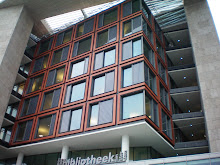Architecture should be for the people: functional and aesthetic.
Architecture encompasses all levels of design that are intended for use by people. The functionality of architecture means it capably serves the purpose for which it was designed. Aesthetically, architecture should be pleasing in the eyes of all people, not just the architect.
Architecture is not just buildings that people use, but also the spaces created in between buildings, that people move through. All space around a building (on its site and considering surrounding sites) must be considered and designed for. The people using the space should be the most important clients and critics of the space. Architecture that merely fulfills the basic needs of those using it should not be considered good architecture. An architect should go above and beyond in design, thinking past what they might want, and thinking what a non-architect would want. An aesthetically pleasing building that doesn't meet (functionally) any of the needs of those using it, should not be considered architecture. Architects should think about a building from the perspective of a blind person, while they may not be able to see it, they still need to be able to easily navigate through it. However, since not everyone is blind, a balance between functionality and aesthetic should be found and designed for. People who use a designed space are not only those who live/work/spend a large amount of time there, but also those who might only go there once to visit.
Monday, September 15, 2008
Subscribe to:
Post Comments (Atom)

1 comment:
this is very straight forward (which is not bad, of course). it is, however, a bit simplistic. the two characteristics you define should already define all architecture. ... so what do you offer that is unique?
having said that, however, i find that in your 9+ statement you introduce a two new very polemical and interesting problematics:
1) the issue of interstitial space (ie. the space around the architecture as central to the architecture itself) [that is why the pompidou center is an interesting prototype]. how does the architecture "consider the space around" itself? how do you propose to incorporate it? how do you make a thesis out of that idea?
in a sense, the inter- prefix (of interstitial) offers a number of possibilities in relation to other words: interchange, interaction, interface, etc. have you thought about these?
2) the notion of "aesthetics" as optically based (ie. about vision and visual beauty). how do the blind define "aesthetics"?
it seems to me that, with this, you should really think about some architecture where your main client is blind... it might help you to explore what is really a "good" building given the parameters that you set up.
Post a Comment